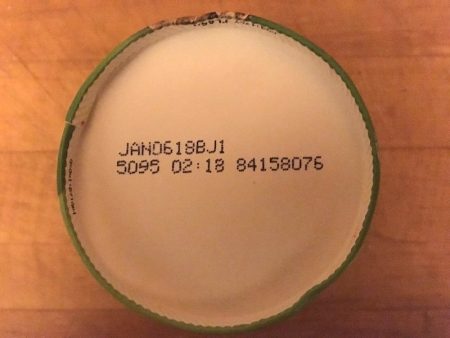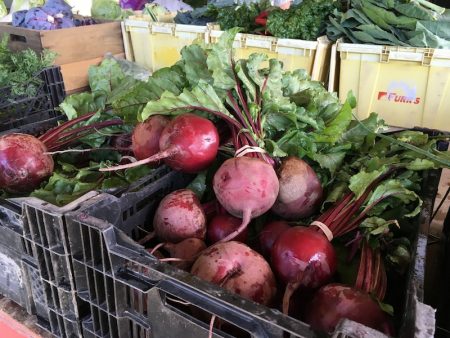
Guest post by Kit Broihier, MS, RD, LD
Courtesy of the Maine Academy of Nutrition and Dietetics
Depending on what packaged product you’re looking at (or considering eating), you can usually find a date stamped or printed on the package somewhere. Some of these dates are there to help consumers determine a food’s freshness and safety, but which ones?
Common dates on packages
According to the Food Safety and Inspection Service, product dating isn’t required by federal regulations except for infant formula. However, it’s helpful to know what the dates and codes mean. Here’s a quick run-down of the most common dates you’ll see:
“Sell By” or “Sell Thru”
This indicates how long the product should be displayed for sale at the store and is typically used for fresh items like dairy products and meats. If you find a product that’s still for sale on its “sell by” date, it doesn’t necessarily mean the product is now spoiled. However, it does cut down on the amount of time you have to store that item before consuming it.
Sometimes while shopping you might notice something that has reached or passed its “sell by” date (I’ve noticed it with things like cheese or yogurt, for example). It’s helpful to bring that to the attention of the store manager.
Stores frequently put coupons on meat and poultry products if they haven’t sold by their “sell by” date. It’s ok to purchase these items, but either freeze them right away or cook/eat the item that day (or within a day or two max) for the best quality and safety. Dairy products past their “sell by” date are usually fine to consume for several days to a week afterward, provided they have been stored properly.
“Best By,” or “Best Before”
These dates (determined by the manufacturer) all mean the same thing — that the food product is at its best in terms of quality and freshness if consumed before the date listed. It is not related to food safety and does not mean the food needs to be tossed out if the date has passed.
“Use By” or “Best If Used By”
This date is the last date the manufacturer recommends consuming the product for quality purposes. You may find this on things like mayonnaise, cereal and peanut butter. Again, it doesn’t necessarily mean that a food is spoiled if it has passed its “use by” date is spoiled. However, it’s a good idea to try and consume foods by their “use by” dates to avoid potential spoilage problems.
Egg Carton Dates
According to the USDA, the “sell by” or “expiration” dates stamped on egg cartons are not federally required, though may be required by the states in which the eggs are sold. What is required by the agency is that those cartons which display the USDA shield must list a “pack date” code. This 3-digit code is the date that the eggs were washed and packaged. It’s a 3-digit code that goes along with the calendar year (a code of 001 means it was packaged on January 1, a code of 365 corresponds to December 31).
The “sell by” date on a package of eggs that has the USDA shield cannot be later than 45 days past the “pack date.” So, the eggs on the shelf at the store can be several weeks old. Always purchase eggs by the “sell by” Look for packages with a “sell date” that’s farthest away from the day you buy them for the freshest eggs, and to give you the most time to use them.
“Expiration” Dates
Most packages don’t actually use “expiration” dates, they use the dates described above. Infant formula and some infant foods are the exceptions, though (the government requires it). Always use formula before the “expiration” date.

How long to store fresh food?
If you’re unsure how long you can store fresh foods in general, check out these guidelines from the USDA. And while you’re at it, check the temp on your refrigerator to make sure that the fresh food you are storing is being held at the safest temperature — it should be at 40 degrees or below.

Leave A Comment